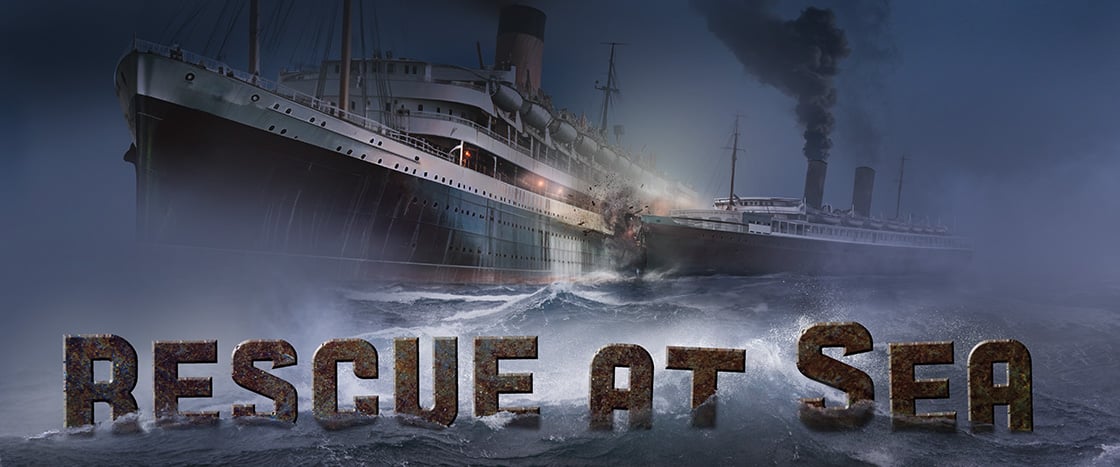Hallie Davis
The first sign of disaster was a thin mist on the water. The cloudy haze crept over the icy waves of the Atlantic Ocean like a silent ghost.
It was a chilly early morning on January 23, 1909. A huge ship named the Republic was slicing through the sea off the coast of Massachusetts. Most of the 461 passengers on board were still tucked into their cozy beds, unaware of the eerie weather outside.
One of them was 10-year-old Hallie Davis. Hallie, her mother, her grandmother, and her 7-year-old brother, Henry, were on the Republic, heading toward a vacation in Europe. As Hallie slept soundly in her cabin that morning, perhaps she was dreaming of the exciting adventure ahead of her.
But in just a few minutes, Hallie’s peaceful sleep would be shattered.
Outside her cabin window, the thin mist had turned into a thick, heavy fog. Up in the ship’s command room, the crew strained to see where the Republic was going. It was like sailing through soup.
Suddenly, another ship seemed to appear out of nowhere—and it was heading directly toward the Republic.
Did the Republic’s blaring foghorn pull Hallie from her dreams? Did she stir as she heard the frantic shouting of the crew? If not, then she was certainly jolted awake by what happened next.
SCREEEEEEEEEECH!
With an ear-piercing shriek and a heavy shudder, the boats collided. The Republic lurched violently as the other ship ripped through its side. The Republic’s wooden decks splintered. Its railings twisted like spaghetti. Freezing seawater gushed into the ship’s engine room.
The two ships were far from shore, hidden from other passing boats by the thick fog. Could they find a way to call for help? Or would Hallie and the other passengers meet their end at the bottom of the ocean?
The first sign of disaster was a mist on the water. The cloudy haze hung over the waves of the Atlantic Ocean like a ghost.
It was a cold January morning in 1909. A huge ship named the Republic was moving through the sea near Massachusetts. More than 400 passengers were on board. They were in bed asleep.
One of them was 10-year-old Hallie Davis. Hallie, her mother, her grandmother, and her little brother, Henry, were on their way to Europe. As Hallie slept in her cabin, maybe she was dreaming of their vacation.
But soon Hallie’s sleep would be shattered.
Outside her cabin window, the thin mist had become a thick fog.
Up in the ship’s command room, the crew tried hard to see where the Republic was going. It was like sailing through soup.
Suddenly, another ship came out of nowhere. It was heading straight toward the Republic.
Did the Republic’s loud horn wake Hallie? Did she hear the shouts of the crew? If not, then she must have been jolted awake by what came next.
SCREECH!
The boats collided. The Republic shook hard as the other ship ripped through its side. The Republic’s wooden decks broke apart. Its railings twisted like noodles. Freezing seawater rushed into the ship’s engine room.
The two ships were far from shore. The fog hid them from passing boats. Could they find a way to call for help? Or would the big boats sink to the bottom of the ocean, with Hallie and everyone else on board?


